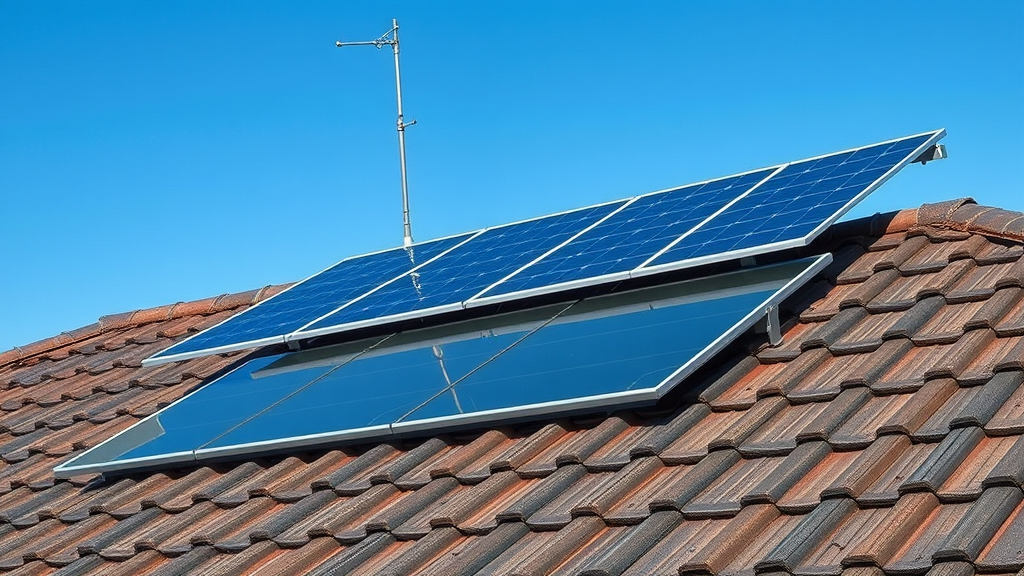Physical Address
304 North Cardinal St.
Dorchester Center, MA 02124
Physical Address
304 North Cardinal St.
Dorchester Center, MA 02124

Installing flexible solar panels on your residential roof can be an efficient way to harness renewable energy while maintaining the aesthetic appeal of your home. Unlike traditional rigid solar panels, flexible panels offer unique advantages such as lightweight design and adaptability to various roof surfaces.
Before beginning the installation, gather these critical tools and materials:
Evaluating your roof’s condition is crucial for successful solar panel installation. Check for:
Follow these precision steps to ensure secure and effective panel installation:
Check out one of the top rated solar panel kits here – https://www.healthrefreshed.com/offgrid-solarkits
Optimal positioning maximizes solar energy capture. Consider these placement principles:
Use marine-grade adhesive and minimal penetration techniques to protect roof integrity. Apply sealant carefully around mounting points to prevent water infiltration.
Proper electrical integration is paramount. Recommended practices include:
| Connection Type | Recommended Action |
|---|---|
| Series Connection | Increases voltage output |
| Parallel Connection | Maintains consistent current |
Regular maintenance ensures long-term performance. Implement these practices:
Check out one of the top rated solar panel kits here – https://www.healthrefreshed.com/offgrid-solarkits
While DIY installation is possible, consulting professionals can optimize your system’s efficiency. Seek advice from certified solar installation experts who can provide personalized guidance.
Explore additional information from these trusted sources:
By following these comprehensive guidelines, homeowners can successfully mount flexible solar panels, transforming their roofs into efficient renewable energy platforms.
When installing flexible solar panels on your roof, having the right tools and following safety protocols is crucial for a successful and secure setup. Professional installers and DIY enthusiasts need to understand the comprehensive approach to solar panel mounting.
Before beginning any installation, prioritize personal safety with these critical protective items:
Check out one of the top rated solar panel kits here – https://www.healthrefreshed.com/offgrid-solarkits
Gathering the right tools ensures a smooth and efficient installation process:
Professional installers recommend thorough roof assessment before panel mounting:
• Inspect roof structure for structural integrity
• Check weight-bearing capacity
• Identify optimal mounting locations
• Clear debris and ensure clean surface
• Measure precise panel positioning
Flexible solar panels offer multiple attachment strategies:
| Mounting Type | Pros | Cons |
|---|---|---|
| Adhesive Mounting | Quick installation, minimal penetration | Limited load capacity |
| Mechanical Mounting | Strong attachment, long-term stability | Requires more installation time |
Proper electrical integration is critical:
Check out one of the top rated solar panel kits here – https://www.healthrefreshed.com/offgrid-solarkits
• Use weatherproof electrical connectors
• Ensure proper grounding
• Follow local electrical codes
• Use appropriate gauge wire
• Install surge protection devices
Prevent potential water damage with meticulous sealing techniques:
For additional guidance, consult these reputable resources:
• National Renewable Energy Laboratory
• Solar Energy Industries Association
• U.S. Department of Energy Solar Program
To maximize solar panel performance:
• Clean panels quarterly
• Inspect mounting hardware annually
• Check electrical connections
• Monitor panel efficiency
• Address any signs of wear immediately
Minimize potential installation challenges by:
Check out one of the top rated solar panel kits here – https://www.healthrefreshed.com/offgrid-solarkits
• Obtaining necessary permits
• Consulting structural engineers
• Checking manufacturer-specific installation guidelines
• Verifying insurance coverage
• Considering professional installation for complex roofs
Remember that while DIY installation is possible, complex roof configurations or limited technical expertise might necessitate professional intervention. Prioritize safety, precision, and long-term system performance throughout your solar panel installation journey.
Successfully mounting flexible solar panels on your roof requires careful planning, the right tools, and a commitment to safety. By following the comprehensive steps outlined in this guide, homeowners can transform their rooftops into efficient energy-generating spaces. The key is to approach the installation with patience, precision, and a thorough understanding of both your roof’s structure and the solar panel requirements.
Remember that while DIY installation can save money, it’s not a decision to take lightly. Your safety and the long-term performance of your solar system depend on meticulous preparation and execution. Take time to assess your roof’s condition, ensure proper mounting techniques, and use high-quality sealants and mounting equipment.
Professional consultation remains a valuable option if you feel uncertain about any stage of the installation process. Experts can provide personalized advice tailored to your specific roof type, local climate conditions, and energy needs. They can also help you navigate potential challenges that might not be immediately apparent to a first-time installer.
Ultimately, flexible solar panels offer an innovative and adaptable solution for residential renewable energy generation. By investing the necessary time and effort into proper installation, you’ll be creating a sustainable energy source that can significantly reduce your electricity costs and environmental footprint. Your careful approach today will translate into reliable, efficient solar power for years to come.
Check out one of the top rated solar panel kits here – https://www.healthrefreshed.com/offgrid-solarkits
The journey to solar energy independence begins with a single, well-planned step. Whether you choose to install the panels yourself or seek professional help, you’re making a positive choice for your home and the planet.